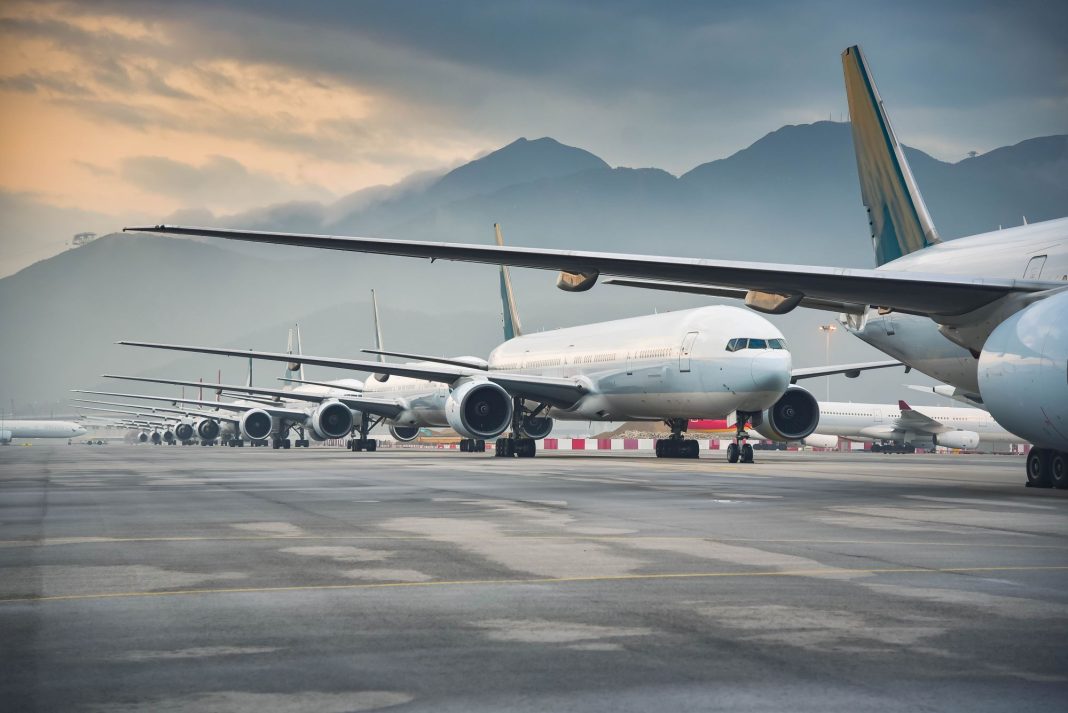23 September 2024 – If the four 2030 Sustainable Aviation Goals are achieved in the next five years, net zero aviation can be reached by 2050. This new report from the University of Cambridge and the Aviation Impact Accelerator sets out what is required.
About:
The aviation sector is at a pivotal moment in its history. Currently, only about 10% of the global population flies, a figure expected to grow as incomes rise. Yet, aviation already accounts for around 2.5% of global CO2 emissions, and when non-CO2 effects are included, its contribution to climate warming increases to approximately 4%. Despite ambitious pledges from governments and industry to achieve a net-zero aviation sector by 2050, the sector remains dangerously off track. Without swift and decisive action, we risk missing the opportunity to reach net-zero emissions by 2050 and delaying the crucial technological and business transformations needed.
While global leaders have endorsed a vision of net-zero carbon emissions for the aviation sector, current efforts fall short in both scope and speed. In some cases, proposed solutions could exacerbate the crisis, such as relying too heavily on biomass for jet fuel without managing its environmental impact. It is also crucial to address aviation’s broader climate effects, including the formation of persistent contrails. The stakes have never been higher: urgent action is needed to shift the sector onto a sustainable path.
This report outlines an ambitious five-year plan to chart that course. It establishes four pivotal 2030 Sustainable Aviation Goals, each targeting key leverage points within the sector. If these goals are not implemented immediately and achieved by 2030, the opportunity for transformation will slip away, leaving the world to face the escalating climate impacts of a rapidly growing aviation sector, which is projected to at least double by 2050.
Ambitious Five-Year Plan to Set the Future of Aviation
The five-year plan involves immediately implementing four Sustainable Aviation Goals which provide a plan for delivering net-zero aviation by 2050. These goals originated during the inaugural meeting of the Transatlantic Sustainable Aviation Partnership held at MIT in April 2023, with representatives from the UK, US, and EU. They were further discussed at a roundtable hosted by the Sustainable Markets Initiative in the presence of King Charles III, and previewed at the opening of COP28.
Two goals (Goals 2 and 3) can be achieved with minimal new technology but require robust and clear market signals and swift policy action. The other two goals (Goals 1 and 4) demand immediate efforts to push the boundaries of technology, creating new opportunities from 2030. The four goals are:
Goal 1: Operation Blue Skies
In 2025, governments and industry should create several Airspace-Scale Living Labs to enable a global contrail avoidance system to start to be deployed by 2030. These labs must have the capability to test, learn, and pivot while operating within a realistic airspace environment.
Goal 2: Systems Efficiency
In 2025, leading governments should set out a clear commitment to the market about their intention to drive system-wide efficiency improvements. In tandem, governments and industry should work together to develop strategies so that, by 2030, a new wave of policies can be implemented to unlock these systemic efficiency gains.
Goal 3: Truly Sustainable and Scalable Fuel
In 2025, governments should reform Sustainable Aviation Fuel (SAF) policy development to adopt a cross-sector approach, enabling rapid scalability within global biomass limitations. By 2030, governments and industry should implement a demonstration and deployment strategy that enables SAF production to move beyond purely biomass-based methods, incorporating more carbon-efficient synthetic production techniques.
Goal 4: Moonshots
In 2025, launch several high-reward experimental demonstration programmes to enable the focus on, and scale-up of, the most viable transformative technologies by 2030. These programmes must generate the necessary experience to assess the technology’s scalability and develop the expertise required for deployment.
Priority Actions
Two priorities stand out. First, Goal 1: Operation Blue Skies offers a low-cost, high-impact solution with significant potential to reduce aviation’s climate footprint while also providing the opportunity to reduce cloudiness in areas where air traffic is high, as seen during the COVID-19 pandemic when flights were grounded — an outcome likely to be popular with the public. Successfully implementing contrail avoidance could reduce the climate impact of aviation by roughly 40%.
Second, Goal 4: Moonshots represents a once-in-a-generation opportunity for nations to lead in developing new, transformative industries. By investing now in frontier technologies—such as cryogenic hydrogen or methane fuels, hydrogen-electric propulsion, and synthetic biology—governments can unlock opportunities within the aviation sector and across a range of adjacent sectors, much like electric vehicles have reshaped the automotive sector.
Growing awareness and commitment to action are encouraging. Still, it is essential to match those professed concerns with decisive interventions over the next five years to create a credible path to net-zero aviation by 2050.






